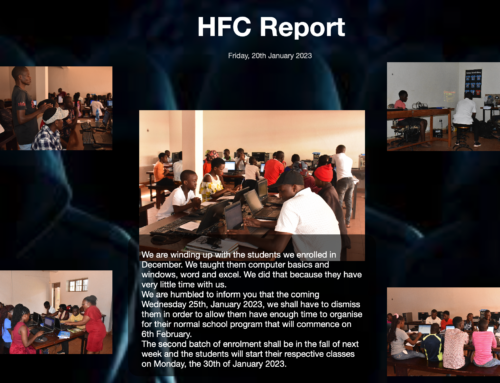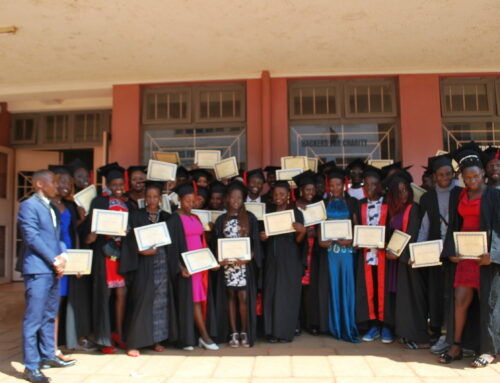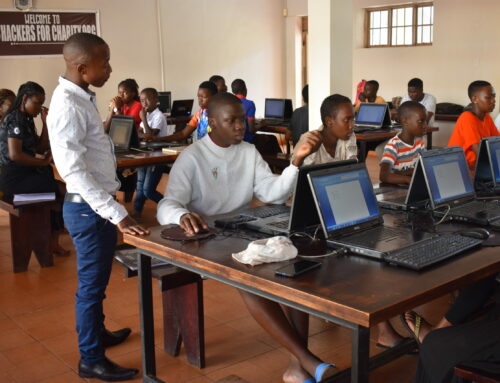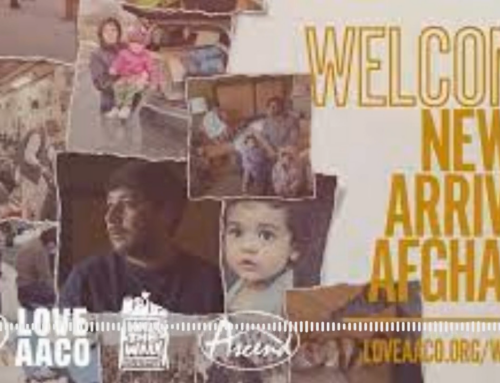It’s been one of those months. Earlier this month, we were flat broke, without any prospect of income, and our friends all over the world sent not only money, but also encouragement. It got us back on our feet, and life was good for a solid week. Then more debt crept up on us, and before long we were back in this all-too-frequent cycle of doubt, scratching our heads and wondering if we were in the right place.
This is a common thought cycle for many of our friends that work here. When you follow a call, and bad times creep in, what constitutes a “call to leave”?
It sucks having our friends bail us out all the time. It sucks having to whine about money. I hate that. And I keep telling myself, “never again” until it’s the next time and I start whining again. In the midst of it, I’m getting requests for speaking gigs, which is great, but I haven’t done a non-HFC talk since No-Tech Hacking, and most clients show that one to their employees as a form of awareness training. So I’m poking at a new “scare the pants off the corporates” talk as a “High-Tech” version of the now infamous “No-Tech”. Friends like Dave Kennedy and Pwnie Express came to the rescue in a big way and not only donated gear but also encouraged me to press on. On paper, it seems like a great idea: I make “big money” doing talks in the US and Europe and bring it here, where the money burns slower, freeing me to focus on the work here instead of trying to scrape by on donations. The problem is that developing a new talk and finding clients takes time, especially since I must do it right, taking pride in my talks as I do, but time is my enemy. For every hour I spend on a talk, it’s an hour not spent doing what I’m here to do. It’s a delicate balancing act and the end result is that a new talk will take longer than I like and the income from said talk will not be seen for months or a year (gads!) or more (double gads!) to come.
That left me in the all-too-familiar spot of despair, worried about money and concerned about getting the balance right.
In the midst of this, our leather program had begun to struggle as well.
We started with ten ladies making journal paper in the village and five artists working in the workshop (our converted garage where the artists work). However, the paper was coming in so fast that our artists and assemblers in the workshop couldn’t keep up. So the ladies in the village were put on hold, but then we started losing artists. One by one, their hours started getting really erratic, or the quality of their work would decline. The program was on the verge of collapse and to make matters worse, tourists were simply not buying journals. Jen and I put in extra hours to try to carry things, but with little demand, we didn’t see the point in laboring too hard for something that was doomed to failure. However, in the back of our minds, we ached for those that were out of work because of this burgeoning program and grew frustrated because all along we had hoped the leather program could generate enough revenue to carry the fifteen (or more) workers, but also help us knock back some of our living expenses.
In the midst of this, some interesting things happened.
Some great friends started bringing massive teams into our restaurant, the Keep. This is always a lot of work, but it’s welcome work. Even though we don’t make a profit, we are supporting seventeen employees at the Keep and when we can make our bills, it’s an encouragement to “Keep on keeping on” and proof that the work is worth the effort.
But when the teams came in for food, they started buying our leather stuff. And by “buying” I mean “cleaning us out then asking if there was more in the back they could buy”. Specifically they were going nuts for the coffee cups. They were buying them faster than we could make them (preorders) and started making requests for three-quarter coverage mugs (lips and leather only mix in bad romance novels) and mugs with removable leather covers (to make it easier to wash the mugs) so we went back to the drawing board and made new templates and started cranking out more/different mugs.
The orders kept coming in and it was getting harder and eventually it became really hard to find mugs. I think we literally bought out all the brown mugs in Jinja! So I started scavenging for new mugs which meant making different templates to account for the different sized and shaped mugs.
Then Josh at Xchange made a request for ten custom mugs with his organization’s logo on it, and I posted the lock pick cases a few days ago and the response was rather stunning. Chris Nickerson pre-ordered thirty cases for his Blackhat course (https://www.blackhat.com/us-13/training/red-team-training.html) and just like that, it was clear that we needed to focus on the leather program for a while. It was, after all, developing a skills training program, supporting Ugandan workers and at least for the time being was generating significant income.
However, the fact remained that we needed real help in our little workshop. We sat down with our three remaining craftsmen, laid out our expectations and got them back online. We brought in a fourth to do cutting and dying and got a lead on a fifth, who will start training on Monday.
We haven’t been given all the answers we need, but that’s ok. We know we’re in the right spot and besides, it feels really good to put in a hard day’s work, even if it’s sweaty and physical work hammering away in a hot garage.
Thanks to everyone who responded about the lock pick cases. We’re working hard to make as many as we can before DEFCON and we even have a few new sizes and designs we’re playing around with. Once we have some stock, we’ll post a link to our Etsy shop. In the meantime, we’ll be happy to hear your ideas or suggestions for cases or leather products. Simply leave us a comment after this post. Thanks everyone!






